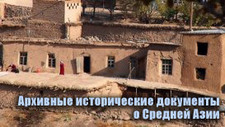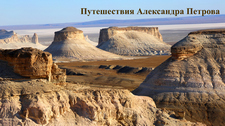Вы здесь
Story of Lidiya and Vladimir Poltoratsky.
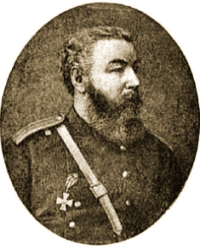
Tourist travels in Kazakh Altai.
“There is nothing more exciting than flying across the steppe on a good horse; Kyrgyz horses are especially charming because they themselves get excited about the competition; don’t even touch them with a whip, just shout over their ears, and they see that another horse is passing them, and they fly as fast as they can, they fly so fast that it takes your breath away, the air whistles in your ears, you feel like you’re intoxicated and you want to go even faster, faster, as if wings had grown behind your shoulders, and if the horse doesn’t go even faster, it seems like you’ll throw it and fly yourself! Which is what happens, but only over your head onto the ground”.
Lidiya Konstantinovna Poltoratskaya.
"The stories we heard from the ladies about the dangers of traveling through these wild places seemed incredible at first, but the excellent photographs, masterfully taken by the general's wife, removed all doubts..."
Despite all the inconveniences and hardships of the journey during these two days, the general's wife immediately set about taking photographs, and the cheerful disposition of both ladies, which never left them, also pleasantly enlivened our evening meal, as if we were somewhere at a party in Semipalatinsk...
...Having gone ahead with the governor and Count Waldburg, we stopped in a wild picturesque gorge to wait for the general's wife, who was detained by her photography...".
Alfred Brehm. "Steppe nomads and their herds." "Life in north and south. From North Pole to equator." 1877.
Photographs of Lidiya Poltoratskaya about nature Kazakhstan Altai.
Among birds there are many species and forms, the names of which immortalize the names of people, most often the discoverers of these birds, outstanding personalities of their time, famous ornithologists, collectors, travelers, expedition participants, relatives, friends and beloved women.
The stories of these descriptions still conceal many secrets and mysteries. I encountered one of these mysteries during my years of work in the Markakol Reserve in the Southern Altai, where I learned that the type locality from which the Siberian subspecies of the starling Sturnus vulgaris poltaratzkyi Finsch, 1878 was described is the Topolyovka River, which flows into Lake Markakol.
And here are the merits for which the German ornithologist Otto Finsch named the new subspecies in honor of V.A. Poltoratsky became known to me later, only after I became acquainted with the history of the Bremen expedition of 1876 and the biographies of its participants.
About V.A. Poltoratsky himself, it is known from encyclopedias that he was an outstanding military figure of the second half of the XIXth century, lieutenant general, cartographer, full member of the Russian Geographical Society, who held the post of governor-general of the Semipalatinsk region for a whole decade and left a bright mark in the history of this region, now located within the East Kazakhstan region.
The fate of this man and the Kazakhstan period of his life are described in more detail in this essay.
Genealogy of Lidiya Konstantinovna and Vladimir Alexandrovich Poltoratsky.
Vladimir Alexandrovich Poltoratsky was born on April 15, 1830 into a noble family in the Tver province. His father, Aleksandr Pavlovich Poltoratsky (1796 – 1863), was a staff captain of the Life Guards Izmailovsky Regiment, a participant in the Patriotic War of 1812-1814 and the foreign campaigns of the Russian army; upon retirement, he held the rank of actual state councilor.
His mother, Aleksandra Vasilyevna, came from the noble family of Utkin. The Poltoratsky dynasty, which was closely related to the Golitsyns, Muravyovs, Olenins and Bagrations, gave Russia many bright and famous personalities (Sysoev 2005).
Suffice it to say that Vladimir Aleksandrovich himself was a nephew of Anna Petrovna Kern, née Poltoratskaya (1800 – 1879), to whom A.S. Pushkin dedicated the famous poem “I remember a wonderful moment”. It should be added that later, in 1865, V.A. Poltoratsky became related to the outstanding Russian zoologist Nikolai Alekseevich Severtsov (1825 – 1885), whom his sister Sofia married. Therefore, in his later life, one way or another, he came into contact with zoologists and was even involved in their travels and research.
Vladimir Alexandrovich received his military education in the Novgorod Count Arakcheev Cadet Corps, after graduating in 1848 with the rank of ensign he began serving in the Life Guards Grenadier Regiment and took part in the Hungarian campaign as part of it.
After that, he brilliantly completed the course of the Imperial Military Academy and in December 1852 was assigned to the General Staff. A year later he was transferred to the Guards General Staff, where he participated in the Eastern War in 1854 - 1856.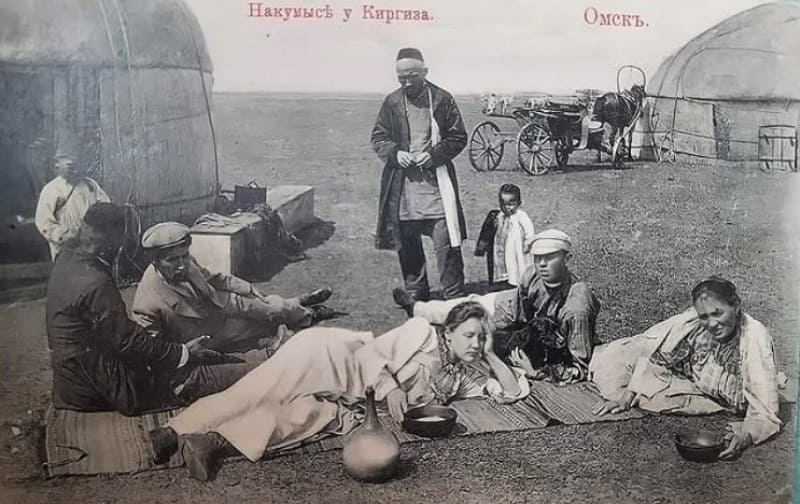
In July 1856, Captain Poltoratsky began serving in the Department of the General Staff, in 1862 he was promoted to colonel and appointed head of the Department for the Affairs of the Caucasian, Orenburg and Siberian Regions. During this period, together with Colonel Alexei Afinogenovich Ilyin (1834 - 1889), he founded lithography and began printing geographical atlases, maps of Russian provinces and regions, Mercator maps of the globe, and various teaching aids. In 1863, under his leadership, the "Desktop Map of European Russia", "Map of Asian Russia" were published, and the following year, "Map of the River Regions of the Amur, Southern Part of the Lena, Yenisei and Sakhalin Island".
The work he started played a major role in the development of Russian cartography and providing government agencies and educational institutions with high-quality cartographic material. In December 1863, V.A. Poltoratsky was appointed head of the Asian Department of the Main Directorate of the General Staff, and later head of Asian Affairs of this headquarters (Polovtsev 1910).
This appointment was very important and significant in his future destiny and career, since over the next two decades he had to take direct part in resolving the most complex issues regarding the state border between the Russian and Chinese empires in the area between Tien-Shan, Dzungarian Alatau, Saur-Tarbagatai, Zaisan and Altai, which only in 1881 acquired the contours that have survived to the present day.
In January 1867, the Ministry of War sent Poltoratsky to the city of Verny (now Almaty) to resolve border issues, and he immediately went to the Central Tien Shan to the border in the Upper Tekes valley near the grandiose Khan Tengri peak. From here, with a small detachment of Cossacks, he went deep into the mountains and reached the Muzart Pass, where previously unknown glaciers were discovered and mapped.
After returning to Verny, an expedition was equipped to reconnoiter the border with China in the hard-to-reach high-mountain regions of the Tien Shan within the borders of present-day Kyrgyzstan. It went down in the history of geographical, botanical and zoological research under the name Chatyrkul.
The detachment's route was extremely difficult. From June 2 to July 31, its participants had to overcome seven high ridges, many turbulent rivers and gorges until they reached the high-mountain lakes Chatyrkul and Sonkul on the border with Kashgaria.
It is known that Nikolai Alekseevich Severtsov was supposed to take part in this expedition, but the day before he fell seriously ill and sent the preparator Ivan Ivanovich Skornyakov instead, who collected a large collection of birds, animals and insects, which laid the foundation for the zoological study of the Central Tien-Shan.
Another participant was Baron Fyodor Romanovich Osten-Saken (1832 - 1916), a botanist and member of the Russian Geographical Society. A graduate of St. Petersburg University, before this trip he served in the Asian Department of the Ministry of Foreign Affairs of Russia and went on a diplomatic mission to China.
While in Verny, he learned about the preparation of a military detachment for a campaign deep into the Tien-Shan and persuaded V.A. Poltoratsky to take him along for scientific purposes. During the journey, Fyodor Romanovich collected a huge herbarium, including 430 plant species.
He published a description of this journey in the "News of the Imperial Russian Geographical Society" (Osten-Sacken 1869). V.A. Poltoratsky himself conducted a topographic survey of the area on a five-verst scale with coordinates determined by an astronomical method.
It later served as the basis for compiling geographical maps of the Tien Shan. Three months after returning from Verny to St. Petersburg, by the Tsar's decree of March 25, 1868, V.A. Poltoratsky was appointed military governor of the Semipalatinsk region, which was then part of the Governorate-General of Western Siberia with its center in Omsk.
In May of the same year, he was promoted to major general and also became commander of the troops in this territory. He took over this position from Gerasim Alekseevich Kolpakovsky (1819 - 1896), who was appointed governor of the Semirechye region formed in 1867 with its center in the city of Verny.
Vladimir Aleksandrovich Poltoratsky's wife was Lidiya Konstantinovna, the daughter of the famous St. Petersburg writer Konstantin Petrovich Masalsky (1802-1861), editor magazine "Son of the Fatherland", the author of historical novels. They had three children: a daughter and two sons - Alexander and Konstantin, who later graduated from military schools and served in the Russian army.
At that time, Lidiya Konstantinovna was an extraordinary woman. Due to her high position, she was the trustee of a girls' progymnasium, headed the local ladies' trusteeship society to provide assistance to poor people and families with young children (Matkhanova, Aleksandrova 2007).
She was also a great lover of traveling, was engaged in literary creativity, signing herself with the pseudonyms Masalskaya L.K., L.P.-ya, Poltaratskaya L.K. In the early 1870s, Lidiya Konstantinovna was fond of photography. Historians believe that she was one of the first female amateur photographers in Russia and the first female photographer in Western Siberia and Turkestan (Morozov 1961).
From 1870, she took part in her husband's inspection trips along the Russian-Chinese border within the Semipalatinsk region, which he personally made annually in the area from Saur to the upper reaches of the Bukhtarma in Altai in order to check the state of its security and resolve all border problems.
And there were many of them at that time, when after the Chuguchak Treaty of 1864, territories in the region of Alakol, Zaisan and the Bukhtarma Valley, previously controlled by the Chinese Empire, were transferred to Russia. Now few people remember that it was under his leadership that border posts were created along the Chinese border between Zaisan and Katon-Karagay. With the blessing of Vladimir Alexandrovich, the district town of Zaisan was built on the site of the Zaisan outpost, founded in 1864, and in 1871, the Altai village, now known as Katon-Karagay, was founded in the Bukhtarma Valley.
They housed detachments of Siberian Cossacks who served to protect the state border. At the same time, he often had to act as a judge, successfully resolving land disputes about the boundaries of pastures, which often arose between volost elders.
On these trips, Lidiya Konstantinovna, along with the military, shared all the difficulties and hardships of riding through the mountains on horseback and spending the night in tents and yurts. At the same time, she changed into a beshmet and chembars - comfortable clothing for horseback riding of the Cossacks - and only in cases of ceremonial meetings did she dress in a women's suit. She was a very brave horsewoman, rode horses along mountain paths among steep cliffs and crossed turbulent rivers. At the same time, contemporaries noted that she was simple and democratic in communicating with people.
It is amazing, but this woman with her bulky camera visited many hard-to-reach places of Altai more than 150 years ago, where rare expeditions and tourist groups accompanied by guides still have difficulty getting to. She not only climbed to the foot of Belukha at the source of the Katun, but also for the first time in history captured in photographs magnificent panoramas of the Katunsky ridge with views of Belukha, Berelsky and Katunsky glaciers.
Among her photographs are views of the Rakhmanovsky hot springs, Upper Rakhmanovsky Lake, the pass between Belaya and Chernaya Berel. During her trip to the sources of the Bukhtarma, she took pictures of the famous cliff on Mount Kokodaba, the Sartapse tract, the Chindagatuy River and the Cossack border picket on its bank.
Of undoubted historical interest are the photographs of the first military barracks in the Altai village, the Tautekeli tract with Kazakh yurts, etc. Landscape and ethnographic photography was just entering the publishing business in the 60s and 70s of the 19th century, so original photographs were initially replaced by lithographs.
The photographs she took during her travels were included in the "Album of Types and Views of Western Siberia", which consisted of more than 50 images, which captured the pictures of Altai, the life and appearance of its inhabitants. For this album, Lidiya Konstantinovna was awarded a large silver medal at the Moscow Anthropological Exhibition of 1879 and was included among the organizing members of the then newly created photo-photography department of the Russian Technical Society (Morozov 1961).
Currently, these photographs are kept in the prints department of the Russian National Library (St. Petersburg). Three years later, Lidiya Konstantinovna donated her collection of photographs of the nature of the Semipalatinsk region to the Imperial Russian Geographical Society and was once again awarded a silver medal.
In 1880, one of the issues of the popular magazine "Niva" published her essay dedicated to the nature of the Semipalatinsk region, illustrated with engravings made from her photographs. She was also one of the authors of the 17-volume edition of Picturesque Russia and for the 11th volume, dedicated to Western Siberia, she wrote an essay entitled “The Southern Slopes of Altai and the Tarbagatai Region” (Poltoratskaya 1884).
In conclusion, I would like to cite another little-known fact. At the end of the 19th - beginning of the 20th century, the Universal Postal Union and the joint-stock company “Granbergs Brefkort” in Stockholm issued a series of postcards with Altai photographs by L.K. Polto photo.
Among them were photographs of "Kirghiz bride in a wedding dress", "In a Kyrgyz yurt", "Kirghiz village in the Arashan valley", which had explanatory captions in French, German or Russian.
Lidiya Konstantinovna Vladimir Aleksandrovich Poltoratsky and Bremen expedition.
The beginning of 1876 was marked by alarming events in Russia. In February it became known that a 90,000-strong Chinese army had moved from Inner China to Eastern Turkestan to conquer the rebellious Muslim Xinjiang. The main goal was the Kashgar state, which had been headed by Emir Yakub Bek for a decade.
At the same time, the Chinese wanted to return the Kuldja region, which was governed by the Russian administration, to their subordination. It was expected that sooner or later a dispute and military conflict could arise over this territory, which could develop into a major war between the Russian and Chinese empires.
European monarchs followed the developments with interest and concern, since if Russia were to become involved in military action, the geopolitical situation could change significantly not only in Asia, but also in Europe. The second notable event was the arrival in early March 1876 in St. Petersburg of a scientific expedition of three German scientists who set out to study the lower Ob in Western Siberia.
Its appearance was preceded by many years of activity by the outstanding enthusiast in the study and development of Siberian natural resources, gold miner Mikhail Konstantinovich Sidorov (1823-1887), who defended the idea of the existence of a sea trade route from across the Kara Sea to the mouths of the Siberian rivers Ob and Yenisei.
His appeals to government departments did not find support, since officials, considering the Kara Sea dangerous for shipping, did not want to take risks and invest money in exploration and study of sea routes. Then M.K. Sidorov invested his own capital in organizing the expedition of the Swedish polar explorer Nils Adolf Erik Nordenskjold (1832 - 1901), who in the summer of 1875 on the sailing vessel "Proven" passed through the Kara Sea and reached the Yenisei Gulf, from where he and a group of scientists went up the Yenisei River by boat (Pasetsky 1979).
In honor of this event, celebrations were held in Moscow and St. Petersburg. This was the finest hour in the life of M.K. Sidorov - in Europe and Russia they immediately began to talk about the prospects for the development of trade relations between Siberia and Europe.
Luck inspired him, and he announced the financing of a trading expedition the following year, which would deliver European goods to the Yenisei, and from there bring Siberian products. N. Nordenskjold agreed to lead this enterprise. Along with this, a second expedition was planned, which faced an equally difficult task - to go to the lower reaches of the Ob River and find an outlet to the Kara Sea.
At the same time, the possibilities of the Gulf of Ob as a port for sea vessels and for establishing sea communication between Europe and Siberia via the Arctic Ocean were of particular interest. Germany became interested in this project, and already on January 10, 1876, it was announced that the Society of the German North Polar Expedition was being organized, which later became better known as the Bremen Expedition, after the name of the city where this event took place.
The main sponsor of this project was the Irkutsk industrialist Alexander Mikhailovich Sibiryakov, who allocated a considerable sum for the time - 20,300 marks - for the research, the main part of which was intended to finance the trip, the rest - for the publication of a book about this journey.
The leader of the expedition was Otto Finsch (1839 - 1917), an ornitologist by profession, at that time a conservator (curator) of the natural history and ethnographic museum in Bremen. At his invitation, the second participant was the famous writer and naturalist, 47-year-old Alfred Edmund Brehm (1829 - 1884), the author of the popular six-volume book "The Life of Animals".
His task included ethnographic descriptions during the expedition, as well as assistance in obtaining animals for the collection. The third and most mysterious participant in the journey was 49-year-old Count Karl von Waldburg-Zeil-Trauchburg (1841 - 1890), a colonel on the staff of the King of Württemberg and, according to some historians, a military intelligence officer.
His presence added special intrigue to this journey, which he set out on "at his own expense", positioning himself as a hunter and "adventure seeker". He took on the collection of herbarium and minerals, and the conduct of barometric measurements using an aneroid.
Before becoming a career military man, the Count graduated from the university with a degree in natural sciences, had an excellent command of cartography methods, and could professionally produce geographical descriptions of the areas he visited. In addition, in 1870 he had already participated in an expedition to Spitsbergen and had research experience.
In Moscow, the expedition's staff was increased by two more participants. The teacher Martin Dzervit, a Latvian from Riga, went as a translator, and the worker of the Shestov artel, Ivan Klyugin, went as a servant. They were later trained in the art of preparation, and during the expedition, in addition to their direct duties, they regularly collected zoological collections, prepared carcasses of animals and birds, which significantly facilitated the scientific work of O. Finsch. They set off on this journey on March 6, 1876, having been honored with an audience with the king the day before.
Upon arrival in St. Petersburg, they spent ten days receiving "open sheets" - the relevant permits and recommendations from the ministers of internal affairs, state property and communications. Officials were, of course, surprised that the travelers who had received money to explore the lower reaches of the Ob also declared a visit to the territory of Northern Turkestan between Tarbagatai and Altai on the border with China in their route.
However, thanks to the foresight of Count Waldburg, who had letters of recommendation from Queen Olga of Württemberg, the sister of Emperor Alexander II, all problems with permits for travel across the territory of the Russian Empire were resolved fairly quickly.
To welcome the members of the expedition, the Society for the Promotion of Russian Industry and Trade held a special general meeting, at which M.K. Sidorov spoke, briefly describing the proposed route of the German expedition and making recommendations that would allow the Ob region to be explored most fully. He ended his speech with the following parting words:
- "Although we have had learned travelers in the north of Europe, including Germans, they were not engaged in natural science research. The path you have chosen to explore the Ob system will provide you with even richer materials, and therefore our society expects important results for the benefit of science, industry and trade from your work."
A meeting with the leadership of the Russian Geographical Society (RGS) also took place. Only after this did the members of the expedition depart by train for Moscow, from which they left on March 18 by mail to Nizhny Novgorod and Kazan.
Their route then lay through Yekaterinburg, Tyumen and only on April 20 did they arrive in the capital of Western Siberia - Omsk. The study of Siberia began with a visit to the Omsk Museum and an acquaintance with its collections of flora and fauna, where they received 20 stuffed Siberian birds as a gift, which laid the foundation for their zoological collection.
Having seen the sights of Omsk and taken part in the Easter celebrations, loading their luggage into four tarantasses harnessed to three horses, on April 24 the travelers hastily set off south up the Irtysh. Having covered 800 kilometers along the postal route, on April 28 they arrived in Semipalatinsk, the center of the Semipalatinsk region, where they were warmly welcomed by Governor-General V.A. Poltoratsky, who had already received notification from St. Petersburg of the arrival of the German expedition and the corresponding instructions for their meeting.
The European guests were comfortably accommodated in the spacious mansion of the assistant police chief Nikolai Gerasimovich Gerasimov, and a gala evening was held in honor of their arrival. The Semipalatinsk residents certainly wanted to meet the famous traveler and writer Brehm, whose arrival became a significant event in the life of the provincial merchant town on the Irtysh.
Brehm himself was pleasantly surprised by his fame and popularity in Russian society and the fact that both adults and children read his books. It turns out that the first edition of the beautifully illustrated two-volume "Life of Animals" in Russian appeared in 1866 and had great success among Russian readers.
The writer was remembered by everyone for his heroic figure and colorful appearance “with straight, combed back hair, like a young deacon, cut in a circle, and with a huge, unusually large nose”, because of which he soon received among the Kazakhs the playful nickname “Zor-muryn”, which means “Huge Nose”.
Brem charmed everyone as “an excellent conversationalist, a merry fellow, a joker and a lover of feasts”. The hospitable Semipalatinsk society also left a good impression on the guests themselves. O. Finsch wrote about this in his diary as follows:
- "By the way, speaking about food, I must say that thanks to the extraordinary courtesy and foresight of the Poltoratsky family, we were completely freed from any troubles regarding the table: we were invited to dine once and for all with them, and if anyone was unable to come due to lack of time, they sent food to his home.
I mention this provident care because in a city like Semipalatinsk, where, as far as I know, there is not a single hotel, this was, in any case, an important service. But it should remain in the background compared to the cordiality with which we were generally received in this hospitable family, where from the very first hour we felt at home.
This was greatly facilitated by the fact that the amiable hosts spoke German, English and French as freely as they did Russian, and we were able to carry on the most relaxed conversation, which was very instructive for us. The entire Poltoratsky family had perfect knowledge of the localities that were the goal of our aspirations, and we met the same experts among the officers who visited the house” (Finsch, Brem 1882, p. 87).
V.A. Poltoratsky took upon himself the entire subsequent organization of the expedition in the territory of the Semipalatinsk region entrusted to him. Firstly, he made significant adjustments to their route and proposed to shorten it by half. The fact is that when planning their route, the German guests expressed an absolute desire to visit the Semirechye region, including the Dzungarian Alatau, Lake Alakol, as well as Tarbagatai and Lake Zaysan.
Later, after visiting Ust-Kamenogorsk and Zyryanovsk, they planned to take a route through the Altai Mountains to Lake Teletskoye, from where they intended to go to Barnaul via Biysk. According to the schedule, they were supposed to arrive in Barnaul on June 5, and on June 28 they were supposed to be in Obdorsk (Salekhard) to go to the lower reaches of the Ob.
Since it was unrealistic to cover such a huge distance in a month, Vladimir Aleksandrovich proposed his own route, limiting himself to the territory of the Semipalatinsk region, and promised personal assistance so that they could complete it within the required time frame.
The guests agreed with his arguments, wisely relying on his experience and knowledge, which they soon became convinced of during the journey. Several days of preparation were spent. During this time, Alfred Brehm, with the help of the soldiers assigned to him, equipped a large supply of cartridges for the journey and even went out to hunt snipe and snipe on the Irtysh, adding specimens of the black-throated thrush Turdus atrogularis and the chiffchaff Phylloscopus collybita to the expedition collection.
Finsch and Count Waldburg, meanwhile, visited the bazaars, buying rice, tea, sugar and other products, dishes and folding iron beds for the journey. They were especially interested in the popular "Tashkent bazaar" in the city, where they purchased many "Bukhara" goods - carpets, saddles, bridles and horse harness with silver decorations, coral buttons, cloth and leather goods, chapans (caftans) embroidered with silk patterns, blankets, chapraks, trousers and other works of oriental art (Brehm, Finsch 1882).
All of them became the basis of their ethnographic collection, which later delighted Europeans during the organization of exhibitions based on the results of the expedition and are still stored in the funds and expositions of European museums.
On the morning of May 3, 1876, the Semipalatinsk residents ceremoniously saw off the expedition on a long journey. They were accompanied by a large retinue, including the governor himself and his wife, the Semipalatinsk police chief A.P. Zheleznov, the merchant I.F. Kamensky and others. The caravan was guarded by a convoy of Cossacks.
At the 107th verst of the highway between Semipalatinsk and Sergiopol (now Ayaguz) in the Arkat Mountains, a driven hunt for argali Ovis ammon collium was organized for the guests, which Alfred Brehm had long dreamed of seeing in the wild.
It was a success for him: with a well-aimed shot he got a female, and Count Waldburg got a lamb, which replenished their zoological collection. Another argali - a six-year-old stag - was got for the guests the day before by a local Kazakh hunter, Adil Khan Dzhamantayev, who amazed Brehm with his exceptional accuracy. From an old Tula rifle on a bipod, he hit him from a distance worthy of the best European rifle. A fascinating essay about this hunt was published a year later by Alfred Brehm in the 4th issue of the magazine "Gartenlaube" (Brehm 1877).
It included a drawing of this hunter, made from a photograph of L.K. Poltoratskaya, who personally participated in the hunt for argali, dashingly prancing on a horse. The writer was no less surprised by the brave police chief Zheleznov. Later, in 1902, the newspaper "Sibirskaya Zhizn" published a note "The Famous Scientist and Siberian Police Chief", which included the following story:
- "One day the expedition was sitting by the fire. A black grouse flew in and sat on a tree about 50 fathoms away, in profile, standing out sharply in the reflections of the evening dawn. Brem noticed that it was convenient to shoot it. Zheleznov expressed a desire to do so and asked Brem to designate a place where he should shoot.
Brem, jokingly, said:
- “In the head,” - and Zheleznov, without moving from the spot, knocked off the black grouse’s head with a bullet. Brem was extremely surprised by such skill. Zheleznov, in order to amaze him even more, ordered the policeman to stand at a distance with a handkerchief in his hand. Brem protested, but Zheleznov, not listening to him, knocked the handkerchief out of the policeman’s hands with a bullet.”
The German scientists were greatly impressed by the golden eagle hunters who demonstrated guests hunting golden eagles and Kazakh greyhounds - tazy. From them Brem and Finsch learned a lot of interesting things about the peculiarities of this national type of hunting of the Kazakhs, the specifics of keeping and raising eagles, and the equipment used. L.K. Poltoratskaya captured the hunters, and these photographs were later published. After their stay in Arkat, V.A. and L.K. Poltoratsky temporarily parted with their guests, since official business required them to return to Semipalatinsk.
Further to Chuguchak they were accompanied by the head of the Sergiopol district, Lieutenant Colonel Vladimir Evstafievich Friederichs, who later published his memoirs about this joint trip. From Sergiopol, the travelers drove along the foothills of Tarbagatai to the post station of Karakol (now the village of Taskesken).
From here, having mounted their saddle horses and loaded their baggage onto camels and pack horses, they rode out across the salt marsh plain to the northwestern end of Lake Sasykkol, where they crossed the Kutty-Moldy ford on a deep channel connecting this lake with Balkhash (now it is called Irtuiskaya, and the area is known to everyone as the "Isthmus").
After spending the night in this place and walking along the reed-covered coast of Sasykkol, the travelers reached Mount Bolshoy Saikan, the northernmost ridge of the Dzungarian Alatau. Here they had a camp and it is believed that it was with this place that Finsch created the famous drawing of Alfred Brehm with a notebook in his hand against the backdrop of the snow-capped peaks of the Alatau.
Having climbed the gorge of the Chinzhily River to a convenient pass, they descended into the picturesque valley of Chubar-Aagach and stopped in Lepsinsk - a large village in the Semirechye region, located in the northern spurs of the Dzungarian Range.
From here they made a hunting trip into the mountains up the Bulenka River, and on May 15 they went up the gorge of the Aganakaty River to the mountain lake Zhasylkol. The scientists were most struck by the transitional nature of the local flora and fauna from Siberian to Tien-Shan.
Most surprising were the forests of endemic Sievers apple Malus sieversii, fir and rowan trees covering the mountain slopes, as well as the magnificent Schrenk spruce Picea schrenkiana growing in the gorges and the thickets of sea buckthorn found along the banks of the rivers.
After five days of getting to know the Dzungarian nature, on May 18 the travelers descended from the mountains to the small Russian village of Uch-Aral on the Tentek River, and the next day they reached Lake Uyaly. Having crossed the swampy isthmus between the lakes Sasykkol and Alakol, they arrived in the Urzharskaya stanitsa at the foot of Tarbagatai.
From here, on May 20, they traveled by tarantass to the border post of Bakhty, and on the way, in the middle of the desert plain, they were lucky enough to see saigas Saiga tatarica with small saiga calves. Here they were met for further escort by the bailiff of the Zaisan district of the Semipalatinsk region, Major Alexander Konstantinovich Tikhonov with a Cossack escort.
The next day they visited the town of Chuguchak. In honor of their arrival, the Chinese governor arranged a ceremonial reception, dinner and inspection of the town. Their further route lay through Chinese territory along the South-Eastern Tarbagatai through villages that still bore traces of severe destruction and pogroms after the Dungan uprising ten years ago, which left a depressing impression on the Europeans, and caused severe mental distress in Finsch.
Thanks to the efforts of Brehm and Waldburg, their collection was replenished with specimens of the inhabitants of these places: the goitered gazelle Gasella subgutturosa, the Siberian ibex, the water shrew Neomys fodiens, and of the birds - the black stork Ciconia nigra, the demoiselle crane Anthropoides virgo, the great bustard Otis tarda, the steppe harrier Circus macrourus, the black-bellied sandgrouse Pterocles orientalis, etc.
Count Waldburg also collected a good herbarium of the Tarbagatai flora. Having climbed the caravan road to the southern slope of Tarbagatai, the travelers reached the Burgusutai Pass to the Russian border post, and after 50 versts of travel along the Chiliktinskaya Valley and through the Manrak Mountains, they safely arrived at the Zaisan post, where they comfortably settled in for a rest in the large house of Major Tikhonov.
Here they met an expert on the local fauna and collector of zoological collections, Andrei Stepanovich Khaklov (1845-1918), who at that time served as a representative of the trading company "Kamensky and Sons", which sent trade caravans with grain flour from Zaisan to the Chinese cities of Barkul, Guchen and Urumqi.
Andrei Stepanovich presented the German naturalists with a number of stuffed birds from his collections, the skin of a snow leopard, the skulls and horns of a Siberian ibex and other animals. In addition, he told them a number of interesting facts about the rare animals of these places.
- "He brought to us one old Kirghiz (Kazakh) man, by the name of Marji Aldyar," Otto Finsch wrote in his diary, "who reported some data from his own observations regarding the "tuikik," or wild camel. This information was later presented by me to the London Zoological Society and was published in its "Notes" in 1878.
We were only some 250 miles from the homeland of this interesting animal (apparently, the Kabano desert in the northwest "about the existence of which nothing positive was known until now" (Finsch, Brem 1882, pp. 205-206). The guests were also interested in information about the Himalayan, or dark-bellied snowcock Tetraogallus himalayensis, which lives along the alpine watersheds of the neighboring Saur ridge.
Having caught fire with a passion to hunt them, Brem, Waldburg and the Zaisan doctor Pander set off the very next evening, May 28, in two tarantasses for the Manrak Mountains, located 70 miles west of Zaisan. Having spent the night in a yurt in one of the villages, early in the morning they rode on horseback, accompanied by two Kazakh hunters and two Cossack guards, up a path to one of the Alpine peaks, where Brem was lucky enough to get a female snowcock for his collection.
From the city of Zaisan, the travelers rode along a highway through the hilly sands of Aigyrkum and stopped on the steep bank of the Black Irtysh 8-10 miles below the Aktobe border post. On June 1, having boarded a large fishing boat, they set off down the full-flowing river, along the banks of which, among the sand dunes, grew, in their words, "primitive forests" of thick black poplars and willows.
During the day, they rafted to its mouth, covering 60 miles. On the way they stopped at a small camp of fishermen to get acquainted with the peculiarities of the local fishing industry. At that time the river was famous for its nelma, sterlet and sturgeon. In addition, they fished for carp, pike, perch, ide, tench, burbot and taimen with nets. In the records of O. Finsch, among the birds encountered and hunted, there are the pink pelican Pelecanus onocrotalus, great cormorant Phalacrocorax carbo, palustrine fish eagle Haliaeetus leucoryphus, black-headed gull Larus ichthyaetus, black-headed gull Larus ridibundus, black-necked tern Gelochelidon nilotica and common tern Sterna hirundo, whiskered tit Panurus biarmicus, reed bunting Emberiza schoeniclus, etc.
Of interest is the mention of the little cormorant Phalacrocorax pygmaeus, pheasant Phasianus colchicus, brood of swan goose Cygnopsis cygnoides and nests of osprey Pandion haliaetus. The next day, having rowed across the lake to Cape Baklaniy, they landed on the northern shore of Zaisan near Chakelmes Hill.
After spending the night, the expedition caravan on horses and camels headed north on June 3 to the blue mountains of the Southern Altai. The first fifty miles were spent on a deserted plain, in the middle of which, like a camel's hump, Mount Karabiryuk rose to the east, the literal translation of which means "black kidney".
Among the birds, they often admired black larks Melanocorypha yellowtoniensis, pink starlings Pastor roseus, saj Syrrhaptes paradoxus, black-bellied sandgrouse Pterocles orientalis, and even found a nest of a bustard Chlamydotis undulata with eggs.
When the saxaul bushes appeared, Finsch tried to find another "most remarkable bird" of these parts - the Mongolian jay Podoces hendersoni, but he never managed to see it. But he was lucky enough to observe the kulan Equus hemionus and, to Brehm's indescribable delight, even catch a foal.
Then the travelers entered the Kurchum Mountains near Takyr, where they stopped for the night near the Basterek wintering ground. The next morning they met here with Vladimir Aleksandrovich and Lidiya Konstantinovna Poltoratsky, Colonel Pavel Mikhailovich Khaldeyev and Police Chief Zheleznov, who had arrived from Semipalatinsk and expressed their readiness to accompany them on their further journey to Ust-Kamenogorsk.
The presence of the governor himself on this section of the route was explained by the problem of the guests' safety, since they were entering the territory of the Chinese Altai. These mountains in the area of Lake Markakol, populated by Kazakhs, were still under the control of the Chinese Empire in those years and were occasionally monitored by inspections from Chinese customs officers (a few years later, in 1881, in accordance with the Treaty of St. Petersburg, the Markakol and Kabinsky parts of the Southern Altai were transferred to Russia and became part of the Semipalatinsk region).
After this meeting, they walked another fifteen miles and reached a temporary border post located in a picturesque meadow valley along the Maiterek River. At that time, there was only one log barracks here - a barracks in which fifty serving Cossacks were quartered.
After a short stop, rest and replenishment of the collection, on June 6, the caravan began to climb the mountains up the Kaldzhir River, along the road along which the local population migrated together with their cattle to the dzhailau - summer pastures on the watershed of the Kurchum Range and to the banks of the Markakol.
Along the way, they encountered only individual yurts of Kazakh auls. Spring had just arrived in the mountains, and snow lay on the peaks. At this time, the floods were in full swing, so even streams and small rivers turned into turbulent streams, which had to be crossed with great risk to life.
In addition, during the ascent to the pass of the Kurchum Range, the weather deteriorated and The travelers traveled in pouring rain, which changed to a cold wind, and then a snowstorm. The night in the yurt was cold, the people were very cold and caught a cold.
On the morning of June 7, they saw a winter landscape around the yurt: fresh snow covered all the surrounding mountains. Soon a magnificent view of Lake Markakol opened up, lying in a vast basin between Azutau and the Kurchum Range.
Having quickly descended from the pass to the source of Kaldzhir - the only river flowing out of the lake - the caravan passed along the northern bank of Markakol and stopped to rest on the bank of Terektybulak (Topolyovka). This fairly large and stormy river flows out of the gorge of the Kurchum Range and, flowing through a wide meadow valley, flows into the lake.
Along its banks grew a forest of larch, poplar and birch, among which they pitched their camp and spent the entire day of June 8, fishing and drying things, while the Governor-General held negotiations with the representatives of the Chinese authorities who had arrived.
The herbarium folders and animal skins, which had to be dried near the fire, became especially wet. Between these activities, they noted 32 species of birds and added new specimens to the collection. This list became the first in the history of the study of birds in Markakol and has now been increased to 265 species, of which 153 are nesting (Berezovikov 2009 a, b).
Of the birds seen in the lake area, O. Finsch mentions great crested grebes Podiceps cristatus, red-necked grebes Podiceps auritus, great cormorants, ruddy shelducks Tadorna ferruginea, black-headed gulls, and in the surrounding forests - black storks Ciconia nigra, black kites Milvus migrans lineatus, palustrine eagles, imperial eagles Aquila heliaca, great turtle doves Streptopelia orientalis, etc.
On the same day, they caught a starling in the forest, which surprised Otto Finsch with the emerald-green color of its back and the purple tint of the sides of its head, which distinguished it from the European and Turkestan forms he had seen.
A year later, having returned home and having compared this specimen with those in the collection, he described a new species - Poltoratsky's starling Sturnus poltaratzkyi Finsch, 1878, which was later considered a subspecies of the common starling Sturnus vulgaris poltaratzkyi.
Finsch named it in honor of Governor V.A. Poltoratsky, who provided invaluable assistance in organizing the trip, without whose assistance they themselves would not have been able to carry out such a difficult route. True, there was a small inaccuracy in the spelling of the surname, so it should have been written "Poltoratsky", and not "Poltaratsky".
But nevertheless, it entered forever into the history of ornithological descriptions, and the name of V.A. Poltoratsky remained immortalized in ornithology. By the way, this was far from the first description of birds dedicated to the Poltoratskys. Five years before that, N.A. Severtsov named a new bird species (painted tit) discovered in Tien-Shan - Leptopoecile sophiae Severtzov, 1873 in honor of his wife Sofia Aleksandrovna Poltoratskaya.
It is noteworthy that at that time starlings lived in the forests of Markakol and nested in hollow trees. A century later, in 1978-1986, when I worked in the Markakol Reserve, they were common inhabitants of villages. There were very few of them left in the wild - only in the old poplar forest near the village of Nizhnyaya Elovka and in the hollows of old larches at the source of the Kaldzhir, and in the forest along the Topolyovka there were none at all (Berezovikov 1989, 2009). Unfortunately, due to bad weather, the travelers could not stay in this interesting place for another day.
The travel schedule was so tight that the scientists constantly did not have enough time to keep diaries, collect and process animals for the collection. From June 9 to 11, the expedition made a difficult horseback crossing through the mountains from Markakol to Katon-Karagay, accompanied by rain and snowfalls.
On the first day, they made a very difficult and exhausting journey along the Kara-Kaba River to the mouth of Tautekeli. It is no coincidence that this section of the route is called the "Seven Passes". Rocky pressures in many places do not allow moving along the river bank, so the horse trails sometimes wind among the rocks and forests up to the top of the mountain spur, then steeply descend down to the river, then again go up the slope.
After spending the night in the Verkhne-Kabinskaya Valley, which was again accompanied by snowfall, there was an equally difficult descent along the steep slope of the ridge to the Bukhtarma River. And only in the evening, completely exhausted, the travelers reached the ruins of the former Chinese post Chingistai - the final destination of the expedition.
The morning of June 12, remembered for the fallen snow, the travelers met in the cozy apartments of the Altai village. L.K. Poltaratskaya captured the harsh picture of this morning in one of her photographs: the snow-covered Sarymsakty ridge and the new barracks at its foot, also covered in snow.
The residents of the village arranged a ceremonial meeting for the guests with bread and salt, in honor of their arrival the governor gave a ceremonial dinner. Commandant Major A.I. Bakhirev and his officers presented the scientists with an unexpected and much-desired gift: the skins of a bear, wolverine, lynx, fox, sable, Siberian weasel, steppe polecat, ermine, weasel, and Altai objects of hunting by the local population.
They immediately replenished their zoological collection. There were also personal gifts: to O. Finsh - a musk deer fur coat and a Kazakh knife, to A. Brem - a huge bear skin and magnificent sable fur, to Count K. Waldburg - lynx, wolverine and fox skins.
The next morning, June 13, the guests left the Altai village for the Zyryanovsky mine, visiting Russian Old Believer villages on the way and being amazed at the wealth of the Altai Kerzhaks. After getting acquainted with the mines and the extraction of polymetallic ores, they went to the Upper Irtysh pier, where the Poltoratskys and the other participants of the trip were waiting for them with a boat prepared for sailing.
The final section of the route passed through the picturesque rocky canyon of the Irtysh from the mouth of the Bukhtarma to Ust-Kamenogorsk. According to their calculations, 729 miles of difficult but very interesting travel remained behind. - "I will add on my own behalf that the ascent to the summit of Gray Peak in the Rocky Mountains, 4,600 meters above sea level," wrote O. Finsch in his diary, summing up the results of the journey, "can be called a child's walk compared to what we endured in Altai."
Having said a warm farewell to the Poltoratskys and other travel companions in Ust-Kamenogorsk, on June 17 the scientists left for Barnaul along the postal route. They were in a hurry - the deadline was pressing. Ahead of them lay a new journey to the lower reaches of the Ob and the most difficult trials of the North.
Unfortunately, they never found a shipping passage in the Gulf of Ob (it would be discovered only in 1918!), but they left for history a wonderful book about their journey, numerous collections and valuable scientific data in their articles.
Epilogue.
Having returned home, the scientists prepared a detailed report on their journey, initially published in German (Finsch 1879). O. Finsch also published the ornithological results of the expedition (Finsch 1877) and reports on some of the most interesting finds of birds and animals.
In 1882, a Russian edition of the book "Journey to Western Siberia by Doctors O. Finsch and A. Bram" appeared in Moscow. It was published at the expense of A. M. Sibiryakov, prudently included in the expedition budget. It turned out to be a wonderful description of the journey, written vividly, fascinatingly and informatively.
Of course, it became so thanks to the writing talent of Alfred Brehm. But we should also give credit to Otto Finsch - he also had the gift of both a writer and an artist. On the way, he made many pencil sketches and drafts, which, upon returning home, the engraver M. Hoffman used to design a book about the journey.
Count Waldburg prepared an overview map and three draft projects for this book. In fairness, I would like to note that the main part of the text of the Russian edition of the book was written by O. Finsch, the text contains only individual fragments from the travel notes of A. Brehm and K. Waldburg. A. Brehm later used his own observations when writing essays for magazines and for subsequent volumes of "The Life of Animals".
However, over time it turned out that the fame and authority of A. Brehm gradually eclipsed the name of O. Finsch, and when mentioning this journey, Russian historians, writers and local historians increasingly began to call Brehm the leader of the Bremen expedition, mistakenly believing that its name came from his surname, and not from the city of Bremen.
Similar inconsistencies are found in descriptions of the history of research of the areas they visited and in some ornithological articles. The collected collections replenished the funds of museums in Bremen, Munich, Stuttgart, Berlin, Vienna and London. Ethnographic exhibitions were successfully held in Bremen, Hamburg, Hanover and Kassel.
The botanical collection of Count Waldburg was transferred entirely to the Royal Herbarium (botanical museum) of Berlin. He left no scientific publications about this trip behind him. Unfortunately, at the time of preparation of the report and the book, the notes from his 150-page diary, containing many detailed descriptions of the visited areas with very precise characteristics of the landscapes, vegetation, geomorphology, hydrology and descriptions of the life of the population, were practically not used.
As it became known later, after reading the published book by A. Brehm and O. Finsch, he doubted the advisability of a separate publication of his materials. Only many years later, after his death, through the efforts of his friend O. Konstatt, the travel diaries of 1870, 1976 and 1881 were published as a separate edition in German.
It remains a pity that the first part of his diary for 1876 has not yet been published in Russian, since the information it contained about the Kazakh section of the journey was would be useful for scientists and local historians. Count Waldburg himself, dissatisfied with the fact that in 1876 he had not managed to clarify the issue of the navigability of the Ob mouth, continued to be interested in this issue.
Four years later, in the summer of 1881, he returned to Siberia again and, with the financial support of A.M. Sibiryakov and L. Knoop, sailed to the mouth of the Yenisei with the goal of finding a more convenient outlet to the Arctic Ocean. The following is known about the subsequent fate of the hero of this essay.
After a ten-year stay in Semipalatinsk, Vladimir Aleksandrovich Poltoratsky was transferred to St. Petersburg and on April 21, 1878, was appointed commander of the Kronstadt Infantry Division. From October 4, 1878 to July 15, 1879, he was the commander of the 5th Infantry Division as part of the Russian troops in Bulgaria in the vicinity of Philippopolis, where he was engaged in the protection of the Arda River and the southern borders of Eastern Rumelia. After serving in Bulgaria, V.A. Poltoratsky was promoted to lieutenant general on August 30, 1879, and appointed head of the 36th Infantry Division on June 19, 1880.
On July 20, 1886, he submitted a request for dismissal from service due to illness, and 5 days later, at the age of 56, he died in the city of Orel (Polovtsev, 1910). Thus ended the difficult life path of the general and scientist-geographer Vladimir Aleksandrovich Poltoratsky, who was entirely devoted to serving the Fatherland.
He never looked for easy ways, honestly and selflessly fulfilled his duty and left good memories of himself among people. And the story told about the Siberian starling is only one of many testimonies to this!
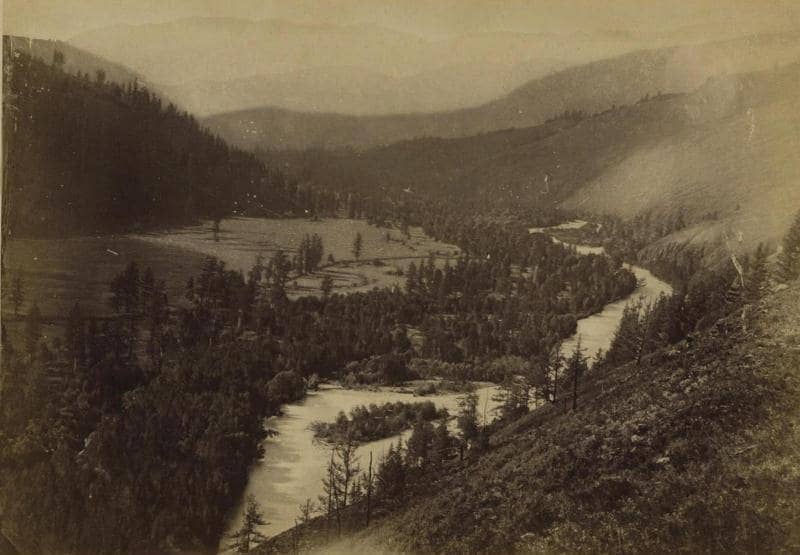
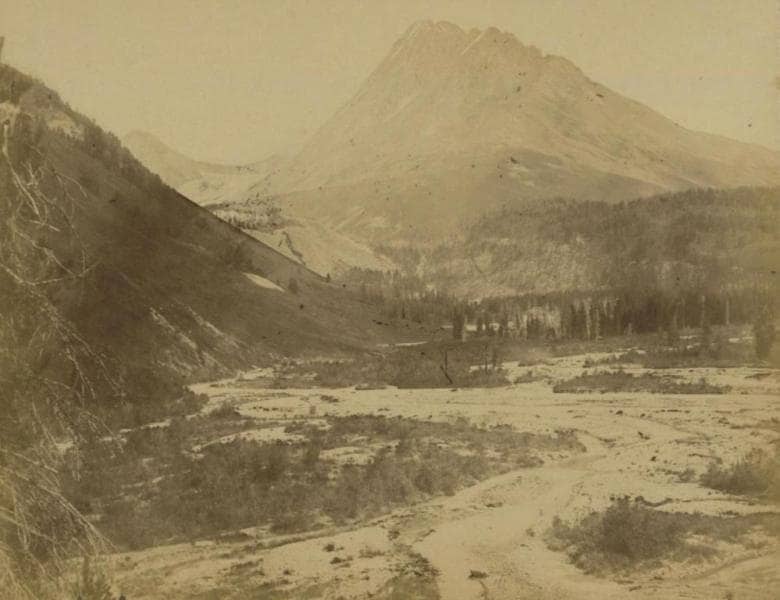
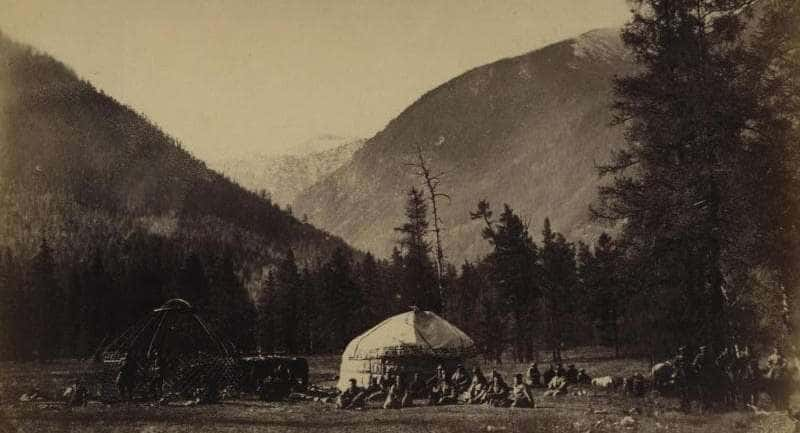
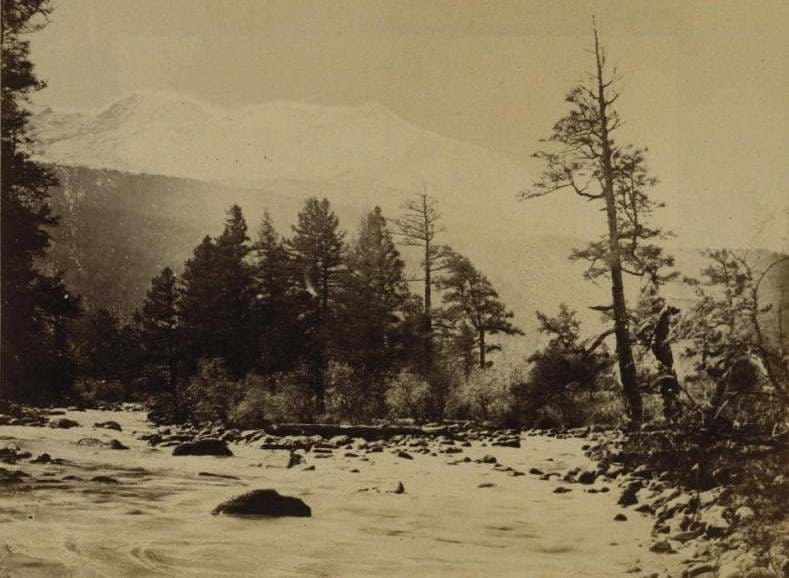
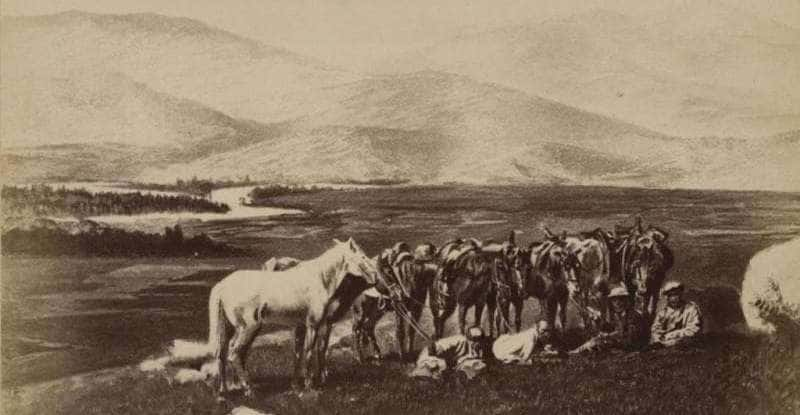
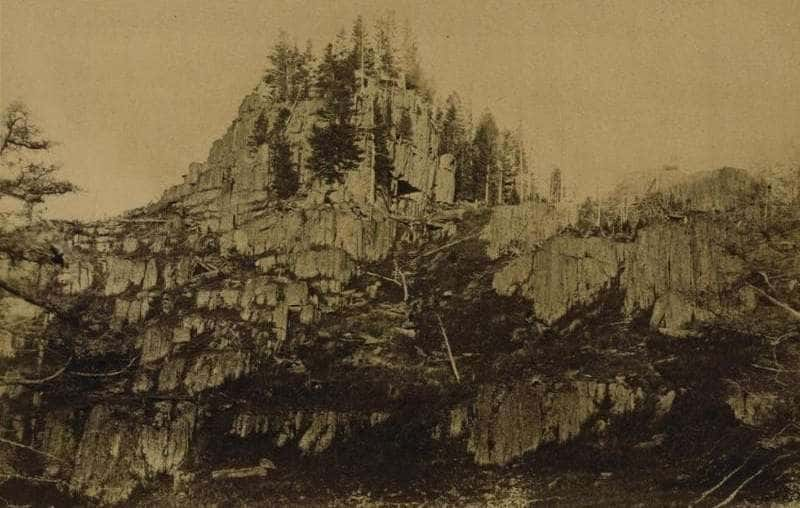
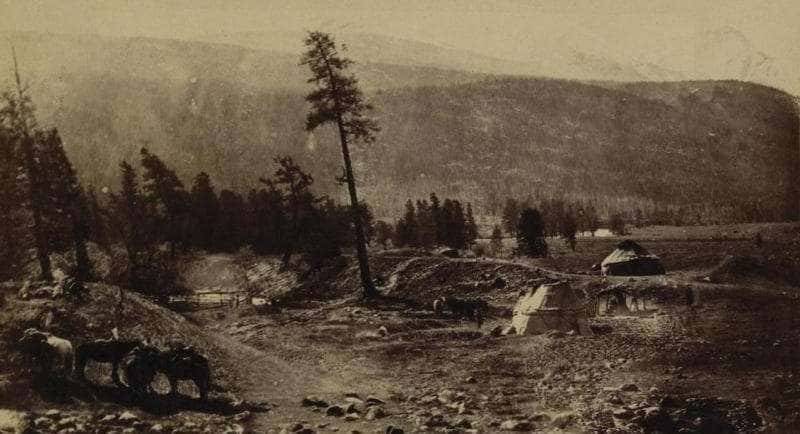
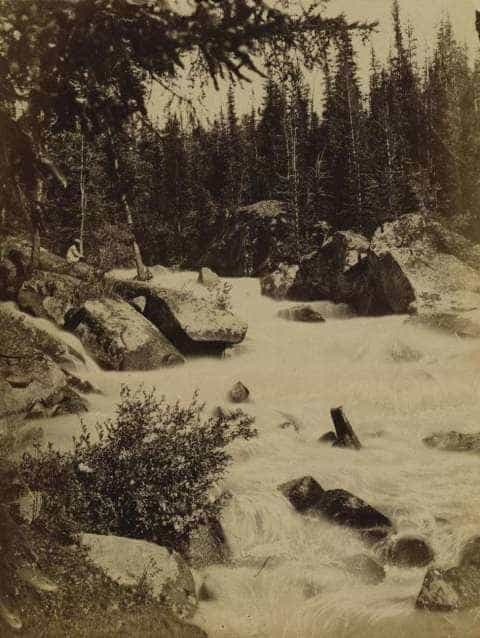
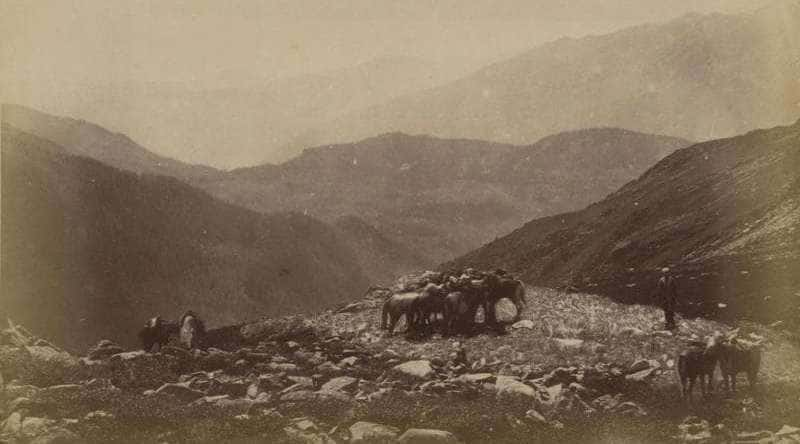
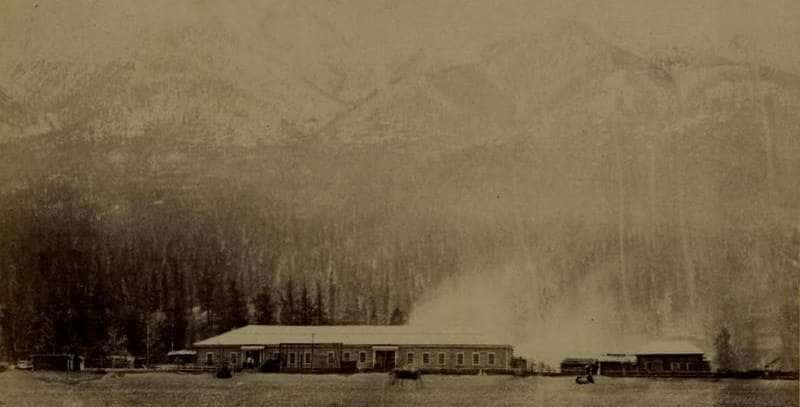
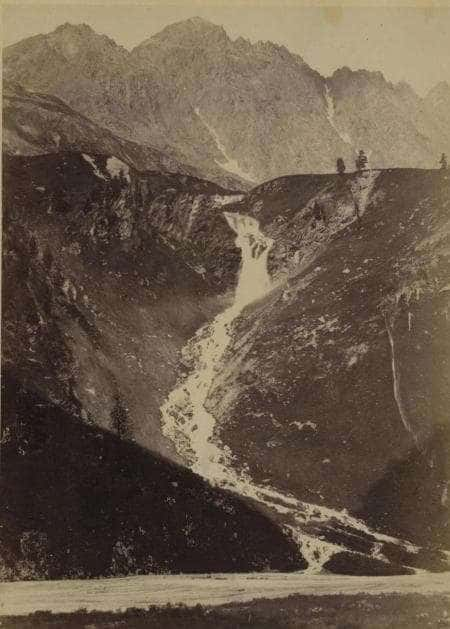
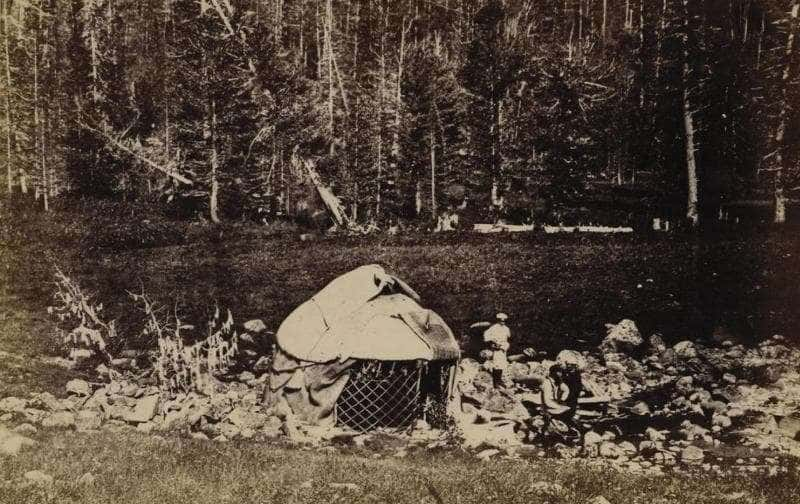
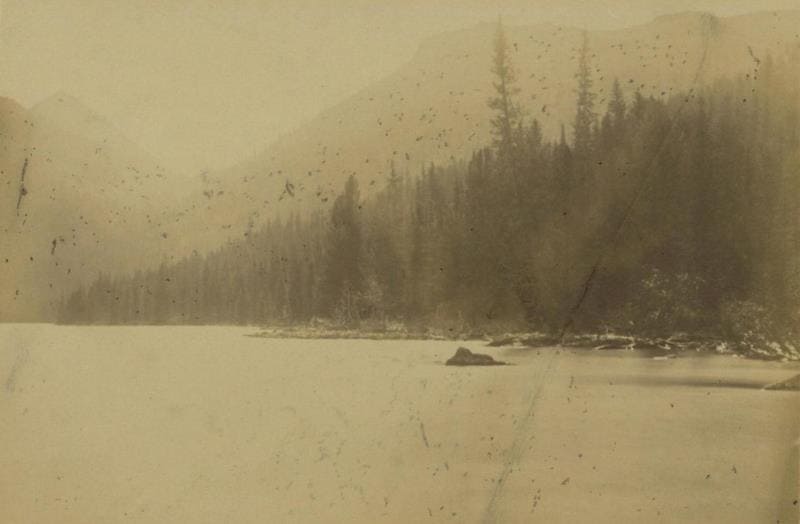
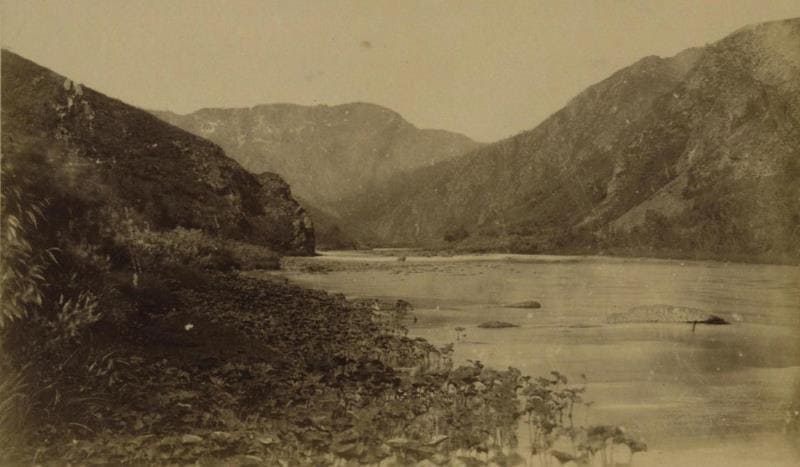
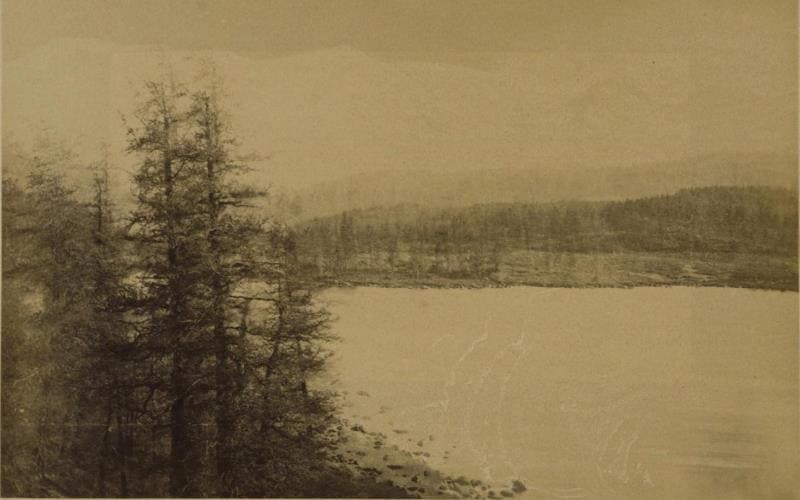
References:
Berezovikov N.N. 1989. "Birds of the Markakol Basin (Southern Altai)". Alma-Ata: 1-200.
Berezovikov N.N. 2009. "Birds of the Markakol Reserve". Works of the Markakol Reserve. Ust-Kamenogorsk, 1 (1): 227 - 248.
Berezovikov N.N. 2009. "History of the study of the avifauna of the Markakol Basin". Works of the Markakol Reserve. Ust-Kamenogorsk, 1 (1): 60 - 72.
Berezovikov N.N. 2009. "Dynamics of the avifauna of the Markakol Basin in the XXh century". Proceedings of the Markakol Reserve. Ust-Kamenogorsk, 1 (2): 102 - 109.
Matkhanova N. P., Aleksandrova N. N. 2007. "First Ladies. Siberian Province of the 19th Century". Science First Hand 15, 3: 102 - 113
Morozov S. A. 1961. "Russian Art Photography". Essays on the History of Photography 1839 - 1917. Moscow: 1 - 179.
Pasetsky V. M. 1979. Nils Adolf Erik Nordenskjold. M.: 1 - 294.
Polovtsev A.A. 1910. "Poltoratsky Vladimir Aleksandrovich." Russian Biographical Dictionary in 25 Volumes. SPb.; M., 14: 1 - 800.
Poltoratskaya L.K. 1871. "Trip along the Chinese border from Altai to Tarbagatai." August 1870. "Journey with her husband from Semipalatinsk to the upper reaches of the Bukhtarma." Russian Bulletin 93, 6: 580 - 661.
Poltoratskaya L.K. 1879. "Bremen Expedition in the Semipalatinsk Region." April - May 1876. "Journey of the Bremen Geographical Society Expedition across Altai with the Poltoratsky Family." Nature and Hunting 1, 3: 23 - 52.
Poltoratskaya L.K. 1879. "Album of Types and Species of Western Siberia, Photographed by L.K. Poltoratskaya". SPb.
Sysoev V.I. 2005. "The Poltoratskys". Family and Clan in the Context of Tver History. Tver: 78 - ¬99.
Finsch O., Brem A. 1882. "Journey to Western Siberia by Dr. O. Finsch and A. Brem". Moscow: 1 - 578.
Finsch O., Brem A. 2009. "Journey to Western Siberia". Reprint edition 1882 St. Petersburg: 1 - 586.
Forschungsreisen des Grafen Karl von Waldburg-Zeil nach Spitzbergen und Sibirien 1870, 1876, 1881. Zusammengestellt und herausgegeben von F. G. Brustgi. Konstanz:
Rosgarten Verlag GmbH, 1987.
Finsh O. 1877. Ornithological letters from the Bremen Expedition to Western Siberia. Ibis 1: 48 - 65.
Finsh O. 1878. On a new species of Starling. Proc. Zool. Soc. London.
Finsch O. 1879. Reise nach West-Sibirien im Jahre 1876. Wissenschaftliche Ergebnisse. Wir- belthiere. Verh. zool.-bot. Ges. Vienna: 115 - 290.
Finsch O. 1909. Vogelarten, welche sowohl in West Siberia als in Africa beobachtet wurden. Aquila 16: 79 - 88.
Authority:
"The story of the Siberian starling Sturnus vulgaris poltaratzkyi and the Semipalatinsk governor-general Vladimir Aleksandrovich Poltoratsky (1830 - 1886).
N. N. Berezovikov.





